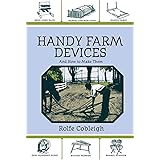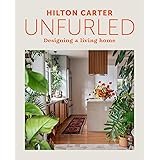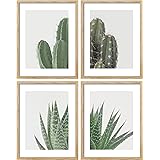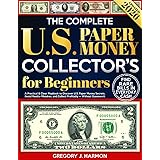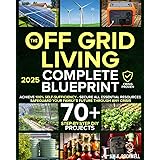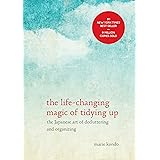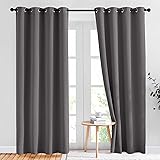Many people dream of cultivating a vibrant garden, but the reality of limited space, especially in urban environments, often feels like a significant hurdle. Perhaps you live in an apartment, a small house with no yard, or simply lack the time for extensive outdoor gardening. You might feel disconnected from nature or miss the joy of growing your own fresh produce.
Fortunately, the solution is much simpler and more accessible than you think: a DIY mini garden! As the video above shows, transforming even the smallest nook into a green oasis is entirely possible. This guide will walk you through creating your own mini garden, bringing nature’s beauty and bounty right into your home, no matter your space constraints.
Unlock Your Green Thumb: Creating a DIY Mini Garden for Small Spaces
A DIY mini garden offers an incredible way to connect with nature, even if your living space is compact. These small-scale gardens are perfect for windowsills, balconies, desks, or even just a corner of a room. They not only add a touch of lush greenery to your home but can also provide fresh herbs, vegetables, or beautiful blooms, boosting your well-being and enhancing your decor.
Imagine if you could pluck fresh basil for your pasta, snip mint for your tea, or admire vibrant flowers all from your kitchen counter. This dream is achievable with a thoughtfully planned mini garden. It’s a fantastic project for beginners, requiring minimal tools and a bit of creativity.
Why Start a Mini Garden? The Benefits of Small-Scale Greenery
Embracing a DIY mini garden brings a wealth of advantages far beyond just having pretty plants. Firstly, it offers a refreshing connection to the natural world. In our busy lives, taking a moment to tend to your plants can be incredibly calming, helping to reduce stress and improve focus.
Secondly, a mini garden can significantly enhance your living environment. Plants naturally purify the air, removing toxins and increasing oxygen levels, creating a healthier indoor atmosphere. They also add a pop of color and life, making any room feel more inviting and cheerful.
Thirdly, growing your own herbs and small vegetables means you have access to fresh, organic produce right when you need it. This can save money on groceries, reduce your carbon footprint, and ensure you’re consuming ingredients free from pesticides. Plus, the satisfaction of harvesting something you’ve grown yourself is truly unmatched.
Choosing the Right Plants for Your Indoor Mini Garden
The success of your DIY mini garden largely depends on selecting plants that thrive in small spaces and indoor conditions. You want varieties that are compact, relatively easy to care for, and don’t require extensive root systems.
Top Choices for Edible Mini Gardens:
- Herbs: Basil, mint, chives, parsley, oregano, thyme, and rosemary are fantastic options. They are generally small, fragrant, and you can harvest leaves as needed. Many herbs also tolerate partial shade, making them suitable for various indoor spots.
- Leafy Greens: Lettuce varieties like ‘Tom Thumb’ or ‘Buttercrunch,’ spinach, and arugula can grow well in shallow containers. You can often harvest the outer leaves, allowing the plant to continue producing.
- Small Vegetables: Cherry tomatoes (dwarf varieties), radishes, and even some small chili peppers can flourish. Look for varieties specifically bred for container growing.
Best Options for Decorative Mini Gardens:
- Succulents and Cacti: These are incredibly low-maintenance, requiring minimal watering and tolerating dry indoor air. They come in a vast array of shapes and colors, making them perfect for creating visually stunning arrangements.
- Air Plants (Tillandsia): Requiring no soil, these unique plants absorb nutrients and moisture from the air. You can display them creatively in terrariums, on decorative rocks, or simply placed on shelves.
- Small Flowering Plants: African violets, peace lilies, and miniature roses can bring a burst of color. They generally prefer bright, indirect light and consistent moisture.
Selecting Containers and Essential Tools for Your DIY Mini Garden
Once you’ve decided on your plants, it’s time to gather the necessary supplies. The beauty of a DIY mini garden is that you can often repurpose items you already have around the house, making it a budget-friendly project.
Creative Container Ideas:
- Terracotta Pots: Classic and porous, they allow good airflow to roots.
- Ceramic or Plastic Pots: Offer a wide range of styles and colors. Ensure they have drainage holes to prevent waterlogging.
- Repurposed Items: Think old coffee mugs, tin cans (with drainage holes added), glass jars, wooden crates, or even old boots! Get creative and give new life to items that would otherwise be discarded.
- Vertical Planters: If space is extremely limited, consider hanging planters, shoe organizers, or tiered shelving units to grow plants upwards.
Regardless of the container, proper drainage is absolutely crucial. Without it, plant roots can rot, leading to an unhealthy or dying plant. If your chosen container doesn’t have holes, you may need to drill a few small ones in the bottom or add a layer of pebbles before the soil.
Basic Tools You’ll Need:
- Small Trowel or Spoon: For scooping soil and planting.
- Watering Can or Spray Bottle: To provide water gently.
- Potting Mix: Choose a high-quality, lightweight potting mix specifically designed for containers. This provides the right balance of nutrients and drainage.
- Gloves: To keep your hands clean.
- Scissors or Pruners: For harvesting herbs or trimming dead leaves.
Nurturing Your Mini Garden: Light, Water, and Care
Caring for your DIY mini garden is straightforward, but consistency is key. Understanding the basic needs of your plants will help them flourish.
Light Requirements:
Most plants need ample light to thrive. Place your mini garden in a spot that receives plenty of natural light, such as a south-facing window. If natural light is scarce, consider using a small grow light, which can provide the spectrum of light plants need to photosynthesize. Different plants have different needs; for instance, succulents love bright, direct light, while some herbs can tolerate indirect light.
Watering Wisely:
Overwatering is a common mistake for beginners. Always check the soil moisture before watering. Stick your finger about an inch into the soil; if it feels dry, it’s time to water. Water until you see a little trickle from the drainage holes. The frequency of watering depends on the plant, container size, and humidity levels in your home.
Feeding Your Plants:
Container plants deplete nutrients from their soil faster than garden plants. Supplement their diet with a balanced liquid fertilizer every 2-4 weeks during the growing season (spring and summer). Always follow the product’s instructions for dilution and application.
Pest Watch:
Even indoor plants can attract pests. Regularly inspect your plants for any signs of trouble, like sticky leaves or tiny bugs. Often, a gentle wipe with a damp cloth or a spray of insecticidal soap (make sure it’s safe for edibles if you’re growing herbs/veg) can resolve issues quickly.
Creative Ideas for Displaying Your DIY Mini Garden
Once your mini garden is established, think about how you can display it to maximize its aesthetic appeal and fit seamlessly into your home decor. A DIY mini garden isn’t just about growing; it’s also about creating a beautiful feature.
Windowsill Wonders:
Line your brightest windowsill with an assortment of small pots. Mix different plant textures and colors for visual interest. This is a classic spot for herbs, ensuring they’re close at hand for cooking.
Vertical Greenery:
Utilize wall space with hanging planters or a vertical garden kit. This is especially good for cascading plants like ivy or string of pearls, or for growing multiple small herbs without taking up counter space. Imagine a wall covered in fresh green, a living piece of art.
Balcony or Patio Retreat:
For those with a small balcony, consider tiered plant stands, railing planters, or a collection of varied pots. This can transform a plain outdoor area into a cozy, green sanctuary, perfect for enjoying a morning coffee amidst your plants.
With a little effort, your DIY mini garden will not only provide you with fresh produce and beautiful decor but also a rewarding and calming hobby. Creating your own DIY mini garden is simpler than you think.


